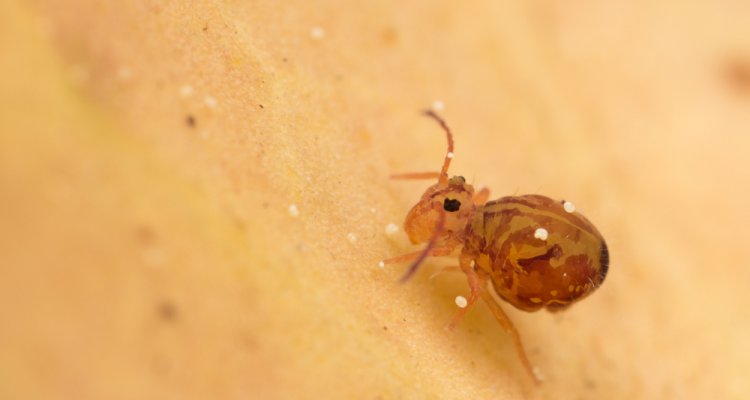
Microarthropods
Soil micro-arthropods include small invertebrate animals with a exoskeleton and segmented body that are visible to the human eye with some magnification for identification.
Among soil micro-arthropods, springtails (Collembola) and mites (Acari) play a primary role in the recycling of nutrients within terrestrial ecosystems.
In particular, they are consumers of microbes such as bacteria and fungi. In fact, their feeding activity is better described as ‘grazing’. Through this grazing they stimulate microbial activity and contribute to the mineralization of nitrogen and thereby to plant growth. As such they play an important role in soil fertility.
Their morphology reveals where exactly they live in the soil profile. Epidaphic collembola e.g. have a relatively large body size, long antennas, legs and furca (springtail) and are very colourful. They live at the soil surface. Deeper into the soil profile, especially in heavy (clayey) textured soils, species are small, white and lack a springtail. They are known as eudaphic species. In between, hemiedaphic species are distinguished. Such adaptation to specific habitat conditions is used in the trait research.